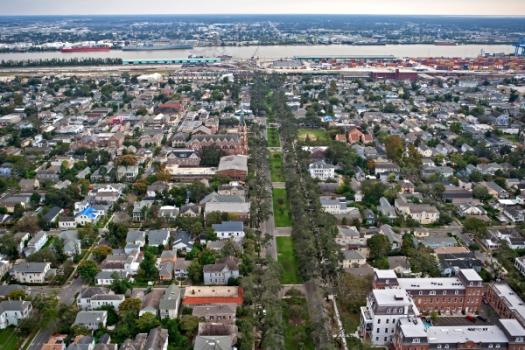
To speed aid after future storms, community groups are building a network of solar-powered “Community Lighthouses” in the city’s most vulnerable neighborhoods.
As Hurricane Katrina barreled toward New Orleans in August 2005, families in the storm’s path faced a choice: stay or evacuate.
For Bianchi Hughes, then 9 years old, her family’s decision wasn’t easy: Her father was recovering from open-heart surgery at Lindy Boggs Medical Center in New Orleans’ Mid-City neighborhood and would have to stay behind. Plus, he usually did all the driving.
It wasn’t until an aunt called, urging the family to seek refuge in Mississippi, that Hughes’ mom finally hit the road with her two young daughters and their dog in tow. “We didn’t get to say bye to my dad at all,” Hughes recalled. Five days would pass before they learned what happened: He’d been safely evacuated from the hospital, which had been left flooded and without power or water for days after basement generators failed. In the storm’s aftermath, 45 patients died; the ruined medical complex was shuttered and remains vacant today.